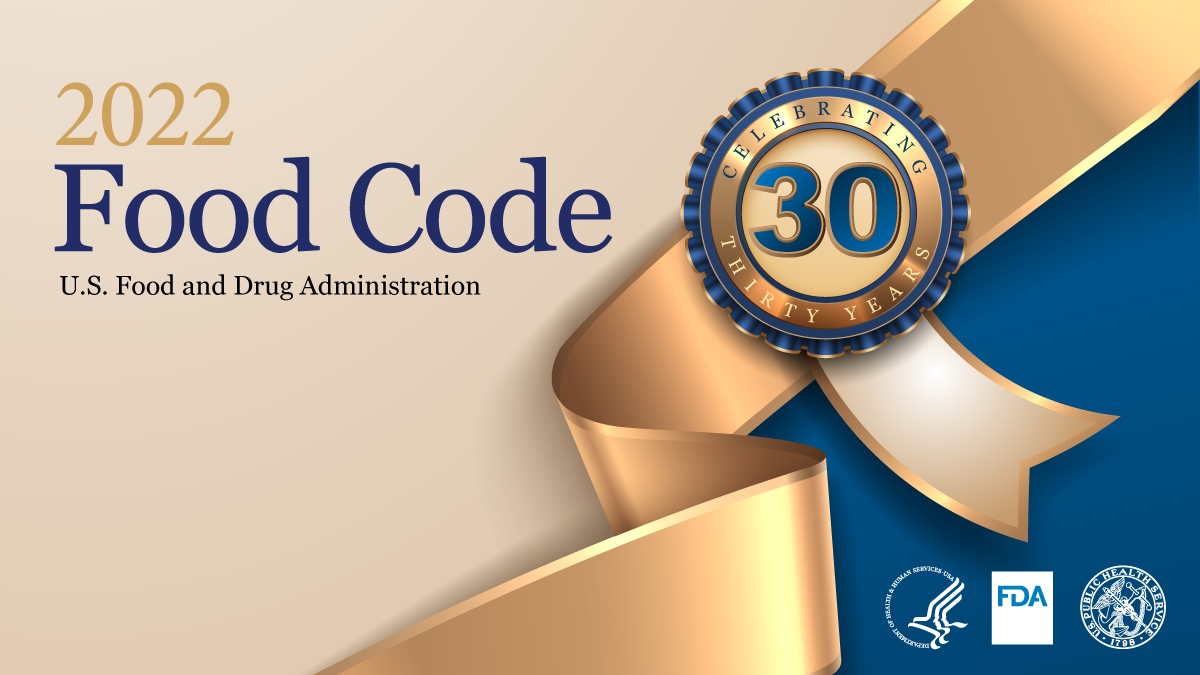
The Food Code is generally produced every four years by the FDA, with an annex document thrown in there every two years. It is the gold standard for food safety in every way, shape, and form.
Soon after getting into the allergen labeling side of the business, I discovered that if I wanted to enact change, I would need to get involved with the body and powers that influence and work to keep the Food Code as current as possible. The group charged with this in the United States is the Conference of Food Protection (CFP). A group of the most intelligent and passionate people concerning food protection for all of us.
For more than six years, I have been working in a minor role with the CFP, specifically sticking my nose and passion about food allergies right in there every single chance I get. In 2017, I submitted changes based on my ideas and mission around food allergies. With the release of the 2022 Food Code on December 28, 2022, I saw years of work and passion show up in print. Even though everything I advocated for had not appeared, anything that did sent me straight over the moon.

Below, I will be breaking down the three critical additions to the Food Code that will begin to add even more wins for the food service industry. Limiting this to just three is a massive challenge as there are so many significant changes in the recent code, but it’s a great place to start.
1. Adding Sesame:
At least eight parts within the new code add the official 9th allergen, sesame, to the list of noted allergens. It was added because of legislation signed into law in 2021 and enacted as of January 1, 2023. So sesame is here, and now our current Food Code matches the legislation and calls out throughout.
2. Training Annex 3 Sec 2-103.11 O
This section was updated, as the code says. “to indicate what food allergy awareness includes.” YES!
This particular update is my favorite area of change. It should be no surprise to anyone as I have devoted the last 13+ years of my life to helping food service get food allergies correctly through training, advocation, partnership and new great ideas/products that have become the gold standards in the industry.
Seeing these words enter Annex 3 was like a late Christmas gift and one that will keep on giving!
Here is just a part of this section:
“Conducting training …. is an essential step in preventing unintended food allergen exposure to the consumer. For example, food allergic consumers often ask employees to share information on ingredients and allergens.”
This is recognizing that not just one manager but everyone needs to know what this customer needs to know and whom they might ask. Since day one, we have trained that getting a person in charge (or, as the code calls it, a PIC) to help that customer is a massive win for the consumer. This language acknowledges that all get asked.
People are desperate for 100% transparency in ingredient content.

The code goes on as follows: “Having employees trained on the elements associated with food allergies is integral in addressing the needs of having informed employees.” This wording gives examples of what training might consist of moving forward. This is an excellent time to mention that all of the training MenuTrinfo provides covers the suggested topics and much more, depending on the level of training. Associate level vs. manager level, the dig-in is different, but both avenues of training provide the basics called out in the code.
“A food establishment developing operational specific allergen training programs for employees may consider incorporating topics including, but not limited to:
- Risks of offering food containing major food allergens;
- Identification of the major food allergens and the hazards they present to
sensitive individuals;
- Recognition of symptoms of an allergic reaction and how to respond;
- Food allergen ingredient identification and labeling;
- Principles of allergen cross-contact prevention concerning the major food
allergens; and
- Food establishment-specific procedures, processes, communication and
controls for allergen management.”
3. Labeling Bulk Foods 3-602.11 (C)(2) and (B)(5)
This one is straightforward. Under this new regulation in the code, if you dispense food in a container that a consumer can purchase, you must have “Food Properly labeled, Original Container to reflect the new addition of consumer written notification of major food allergens as an ingredient in unpackaged foods.” Like all the changes, this will take effect for people in areas where the latest code is adopted – and what an evident difference. Simple, easy to follow, and spot-on for those with food allergies.
It is a privilege and honor to help food service professionals correctly and safely serve the food allergy community.
For more information on how MenuTrinfo can help you get up to speed on the 2022 Food Code, get in touch with our team of experts!

About MenuTrinfo®:
MenuTrinfo® is a company dedicated to ensuring safe food service by providing allergen and nutritional information, as well as programs such as Certified Free From™, AllerTrain® and a wide variety of services for colleges, universities, manufacturers of consumer-packaged goods, and more. We excel in employee food allergy training and certification, as well as food safety guidance and menu consulting. MenuTrinfo® has become a trusted partner for food service partners and manufacturers across the United States, and the company’s mission is to protect lives and make dining experiences as safe as possible for those with allergy restrictions.



